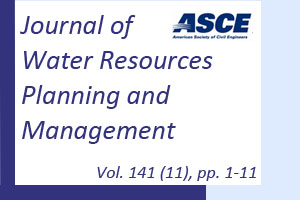
Automated data driven approaches to evaluating and interpreting water quality time series data from water distribution systems.
Author: Mounce, S. R., Gaffney, J. W., Boult, S. and Boxall J. B.
Full Paper
Abstract:
Water distribution networks are not inert transport systems. The high-quality water produced at water treatment works is subject to a variety of complex and interacting physical, chemical, and biological interactions within these highly variable, high-surface reactors. In particular, the aging and deteriorating asset condition in water distribution systems can result in a degradation of water quality delivered to the customer, often experienced as discoloration caused by increasing amounts of fine particulate matter. Here, it is proposed that by assessing measured turbidity over time, in particular its correlation with local hydraulics, an assessment of change in risk of fouling can be obtained and asset deterioration inferred. This paper presents a methodology for pairwise monitoring of a hydraulic parameter (flow or pressure) and turbidity using wavelet-based semblance analysis—a novel methodology from another domain, which is applied for the first time to water quality data in distribution systems. It is suggested and subsequently explored through case studies that an increasing (anti) correlation of the turbidity with the (pressure) flow diurnal cycle will be indicative of increasing fouling risk. This can be further supported through evaluation of the rate and magnitude of drift and through assessment of the change in magnitude of the daily turbidity profile. The composite of these approaches is applied to an extensive data set from a United Kingdom distribution system revealing the effectiveness of the analysis preflushing and postflushing (reducing discoloration events by 64–89%). With increasing proliferation of monitoring devices and real-time data acquisition the potential for online systems and well-informed proactive management is apparent.

